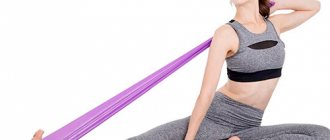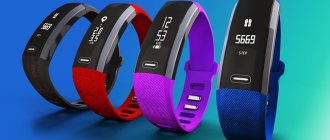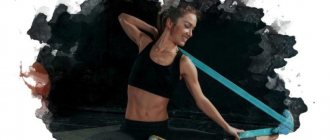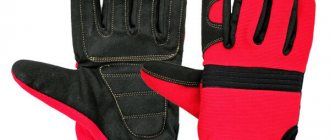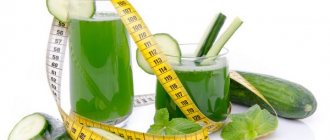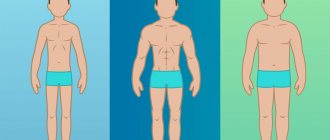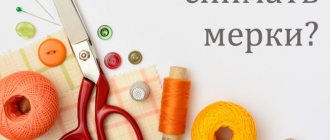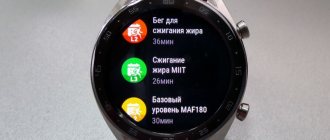A ball is a spherical object that can roll, jump, or bounce off the surface of the earth. People use it for a variety of games. Scientists have not determined exactly where such an object first appeared, but balls made from a variety of materials have been found during excavations in all countries of the world. People loved to play with a ball made from animal skin, tied or twisted from a bunch of leaves. There were fabric and wooden options, woven from reeds or palm branches.
Different types of balls were played in different ways. Some were intended to hit a target or goal, others threw them to each other, pushed them with sticks, and tried to prevent the opponent from being able to catch the given spherical object.
Nowadays, there are cheap children's balls for playing in the yard and inflatable ones for water activities. There are types of balls for sports team games. They have a strict classification and are manufactured at enterprises that use the latest technologies in the production of attributes for games.
In the article we will look at the types of sports balls with photos, what they are made of, what shape they have, and how to play with them. There are professional and expensive balls, but for a beginning athlete you can buy good, but not so expensive analogues. For each sport, unique gaming items are produced.
Thus, a basketball ball differs significantly in appearance, size, and internal structure from a football or handball ball. Let's take a closer look at several types of balls.
Soccer ball size
There are 5 size standards among soccer balls:
- Size 1. Usually these are balls for advertising, with inscriptions and logos of sponsoring companies and manufacturers. Synthetic materials, 32 panels, structure and shape like sports balls. Circumference - 43 cm.
- Size 2. Children's ball, which is used by coaches to train younger groups aged 4-7 years. Material: synthetic, 32 or 26 panels, weight: 283.5 g, circumference: 56 cm.
- Size 3. Training for children from 8 years old. 18, 26 or 32 panels, synthetic or PVC, weight - 340 g, circumference - 61 cm.
- Size 4. Training ball for children from 12 years old, and a standard sports ball for mini-football . Material - leather or synthetic, weight - 369-425 g, circumference - 63.5 cm.
- Size 5. The standard adopted by FIFA for all official competitions for children over 12 years of age and adults. Weight - 410-450 g, circumference - 68.5-70 cm.
Volleyball ball
The volleyball is made from artificial or genuine leather. The cut consists of six panels sewn together, which are stretched over a frame base. The color scheme can be any, both multi-colored and monochrome. Each section has three stripes. The circumference of the product is 650-670 mm. Since they play with their hands, the weight of the product is small - from 260 to 280 grams.
The following types of volleyballs are distinguished:
- For playing in the hall. The internal air pressure of the ball is about 300 hPa.
- Products for beach volleyball. The size is slightly larger than the hall counterpart. The pressure inside the object also differs. The beach version is not as inflated, the pressure is less, because it will have to bounce off the sand.
https://youtu.be/3HQAPGvZQOg
Preparation for classes
If the fitball for babies is pumped up too much, it will slip across the floor when rocking on it. And the child may slip off the ball. But, if it is too weak, the child will “fall” into it, like into a feather bed, and the desired effect will not be achieved. Therefore, the ball needs to be pumped up so that it springs softly when you tap it with your palm.
Many experts recommend covering the ball with a diaper during classes and placing the child on it. This is possible in the first month, while the range of motion on the ball is small and the child is rocked only on his stomach. When the amplitude increases, the diaper begins to slide over the ball, gather in folds, and interfere with exercise. Therefore, it is better to practice without a diaper. But, wash the ball at least once a week. Before use, wipe it with a dry, clean cloth.
If you do not like direct contact of the child’s skin with the rubber of the ball, you can put a bodysuit on the child during classes (the bodysuit does not have seams on the back and stomach).
Lightweight table tennis ball
Everyone knows that this is the lightest and smallest ball that exists in sports games. It is made from thin celluloid. Most often, white balls are produced, but there are also yellow and orange specimens. It is created at the enterprise from two halves, which are glued together overlapping.
The diameter of the product ranges from 3.6 to 3.8 cm. It weighs a little more than 2 grams (up to 2.5 g). You need to choose products that are slightly rough, there should be no scratches.
Types of fitness balls
If you decide to do this kind of fitness, you should buy the “right” ball. There are several varieties of these rubber exercise machines.
- Big round ball
. This product is perfect for both adults and children. Choose this item based on body size. - Oval ball
. This item performs the same functions as a round projectile. But it is much more stable. This allows beginners and people with poor coordination to successfully practice gymnastics. - Ball with tubercles
. This device is perfect for those who want to improve blood circulation. It shows good massage qualities and has proven itself in the fight against cellulite and excess weight. - Ball with handle
. This projectile is best purchased for children and pregnant women. The presence of a comfortable handle increases safety during exercise.
Operating rules
A fitball is a safe sports equipment that can be easily inflated with a conventional pump, manually or automatically. To make it last longer, use the ball only on a smooth and level surface to avoid the risk of causing mechanical damage. Products should be stored in an inflated state away from sunlight.
Gymnastic balls are simple sports equipment that nevertheless allow you to solve a number of problems without leaving your home. They are absolutely safe, provided that basic rules are followed. The main thing is not to leave a child, especially a small one, alone with this projectile. Today, the most popular products are the following brands: Gymnic, Ledragomma, Azuni, Spokey, Torneo. By choosing the right gymnastic ball, you can perform effective exercises at home without much effort.
Features and Benefits:
- Durable, hygienic material;
- Smooth surface;
- Comes with a pump;
- Handles (“horns”) that the child holds on to while doing exercises;
- Colorful gift packaging.
The ball is made from a synthetic polymer material – polyvinyl chloride. This is a hygienic, chemically neutral material. It is resistant to the chemical action of alkalis, oils, a wide range of acids and solvents. In addition, it is characterized by resistance to low temperatures (down to -15°C) and significant resistance to heat (up to +65°C).
These features provide PVC products with wear resistance and allow them to retain their shape for a long time. Since the material is chemically passive, various medications (ointments, creams, etc.) can be applied to it. Like many other materials of this type, PVC is characterized by stretchability and elasticity, which is why balls for exercise therapy and fitness training are often made from it.
The fitball is equipped with 2 handles in the form of “horns”, which the child holds on to while doing exercises, which makes training safer.
How to play tennis
Tennis is played with large rackets, throwing a small bright ball over the net. It usually has a yellowish-green tint, but it can also be white. The goal of the game is to prevent the opponent from hitting the ball.
Making a tennis ball has its own unique features - when vulcanizing a rubber product, you need to pump an inert gas inside. This is done like this: before the process, a tablet is placed in the workpiece, which, when the temperature rises, releases gas, which creates the necessary pressure in the rubber ball, approximately equal to 2 atmospheres. The tablet consists of inorganic salts.
The tennis ball is covered with a fleecy material - felt or felt. It is this coating that protects the ball from impacts, because sometimes the speed of an object after touching the racket reaches 200 km per hour. The size ranges from 6.5 to 6.8 cm in diameter, and the weight does not even reach 59 grams.
Features of a water polo ball
Since this type of sports ball is used in an aquatic environment, the product is made on a frame made of rubberized material. The outer covering is completely similar to a soccer ball (weight and size).
Water polo balls are additionally covered with a waterproof layer, but it should not contain fat. The ball is inflated with air and the hole is closed with a nipple. Balls vary in weight and size. Larger copies are produced for men's teams. Their circumference ranges from 680 to 710 mm, and the weight of the product is up to 450 grams.
For games by women's teams, balls are produced in smaller sizes - barely reaching 670 mm, such a ball weighs 400 grams. Internal pressure is also less.
Exercises
If you have been practicing since two weeks, take care of the hygiene of your navel, since at this time, as a rule, it has not yet healed completely. From one month on, gymnastics on a fitball has massage functions - gas separation and digestion of the baby are improved, the child learns to hold his head up, while the abdominal and neck muscles work well.
- We do the first classes as an orientation session so that mother and child get used to the apparatus, so we do it for no more than a minute.
- We place the one-month-old baby on the ball on his tummy and rock him in different directions with straight and circular movements, gradually increasing the strength and amplitude.
- Add vibrating movements by pressing the baby's stomach against the ball, holding the palm behind the back. Increase the time of exercise from one to five minutes, the frequency - from three to five times a day.
- At the end of the first month, you can hold the baby by the legs, but you still need to exercise on the tummy.
- From the age of three months, the newborn can be placed on his back.
- Increase the amplitude so that the child can touch the floor with his hands and feet.
- Place your full feet on the ball, supporting the baby with your armpits, so the child will develop the muscles necessary for walking.
Exercises for newborns on the ball are a good opportunity to communicate with the baby; accompany the exercises with verbal communication, so the newborn child will develop not only physically, but also psychologically. For all-round development, do regular gymnastics, massage, let the child grab the handle of the ball, roll the ball on the floor, and also throw out ordinary toys so that the child explores them. Make fitball sessions fun, filled with positive emotions, and your child will look forward to them.
https://youtu.be/42IK8DPTvwA
Bloody medieval bath
In the beginning there was the word. And the word was “kill.” Humanity has played ball since the beginning of time and all over the planet - from the ancient Greeks to the Song Dynasty in China, from the Indians of Central America to the Australian Aborigines. But the beginning of all modern types of football was given by the incredible cruelty with which Europeans kicked the ball in the Middle Ages.
“Thomas from Salisbury, a student at Oxford University, discovered the body of his deceased brother Adam. He was supposedly killed by Irish students while playing ball in the High Street near Eastgate,” as recorded in the Oxford Chronicle in 1303.
There is archival evidence that five years later, an Irishman, John McCrocan, was accused of manslaughter in the murder of football player William Bernard.
“During the game he kicked the ball, a friend ran up to him and hurt himself,” wrote about football in 1321 in Shouldham, Norfolk, England.
The medieval European ball game, referred to in chronicles as football, was most often a game in which one village played against another (or one town against another). The number of participants is unlimited. The goal is to deliver the air-inflated remains of the animal to some important geographical location, for example, to a neighboring church.
“There is only one rule - no rules,” this is about the football progenitor. As a result of one such game, the dead and maimed were innumerable. Naturally, the authorities tried their best to limit the spread of traumatic fun.
In 1363, the English king Edward III legally prohibited handball, football and hockey, putting them on a par with hare hunting and cockfighting. He was neither the first nor the last. In general, all the earliest mentions of football are messages about its ban.
When prohibitions did not help, they began to come up with rules.
Terrible beast Gridairon
The field at Syracuse University Stadium in 1910.
There is another term that fans of American football should know: gridiron football. At one time, our site could have been called not First & Goal, but Gridiron.ru.
Gridairon football refers to variations of this game on a specially marked field, which in its design resembles a barbecue grill. These include American football, Canadian football, flag football and arena football. The difference between them is the same as between dialects of the same language. But rugby football will be a different language, but from the same language group as Russian, Ukrainian and Belarusian.
And if we want not to quarrel because our languages, the color of our skin, the name of God are different, then why not start by coming to terms with a ball of a different shape? In the end, it's all just football.
Choosing a fitball
This question interests almost all beginners, and this is not surprising: differing in weight and height, they want to choose a projectile that will be as convenient as possible to use and will bring the greatest benefit to the body.
How to choose a fitball by size?
To select the fitball size according to your height, any store will provide you with a table with the appropriate recommendations (it is usually present on the ball label).
Here are the most commonly used ratios:
- people up to 155 cm tall should choose a projectile with a diameter of 45 cm;
- for those with a height between 155-164 cm, it is preferable to buy balls with a diameter of 55 cm;
- with a height of 165-174 cm, a fitball with a diameter of 65 cm would be ideal;
- people with a height of 175-184 cm should use a 75 cm exercise machine;
- For those whose height exceeds 185 cm, balls with a diameter of 85 cm are suitable.
Many manufacturers offer instructions on how to choose a fitball based on your height, in which these indicators may differ slightly, but the general trend is clear: the greater your height, the larger the fitball.
Choosing a fitball based on a person’s weight
An equally important indicator is the weight of the person who intends to purchase a Swiss ball. Some conflicts are possible here: if you know how to choose a fitball based on your height from the corresponding table, then in terms of weight, manufacturers indicate only the maximum permissible load. And if the buyer is short and weighs a lot, the declared value may be less than required. In such cases, you can pay attention to models from other manufacturers; in extreme cases, you will have to buy a ball with a slightly larger diameter.
Those who are overweight should look for exercise balls that have an anti-burst feature . Such projectiles are marked accordingly (in English these are the abbreviations BRQ or ABS, which means Burst Resistant Quality and AntiBurst System, respectively).
The quality of the projectile is the main thing
If you don’t know how to choose a fitball based on quality , don’t hesitate to ask a sales consultant, or even better, find out ahead of time using the Internet. The level of comfort of the equipment and compliance with your dimensions should be checked right in the store: after sitting on the fitball, as on a regular chair, make sure that a right angle is formed . If such a ratio is not observed, such a ball will not suit you, since when exercising on this simulator, the load on the joints will be quite significant. And, as we remember, the benefits of a fitball will be maximum if your musculoskeletal system is unloaded.
Now you know how to choose the size of a fitness ball, but there are several more important criteria that you should pay attention to.
Ball elasticity
One of them is elasticity, which characterizes the degree of load on the body during training. A more elastic ball will require more effort from you to maintain balance; a soft fitball will provide minimal stress. Press lightly with your hand on the top of the projectile: the deflection of a ball with an average elasticity will be approximately 2-3 centimeters, of a hard projectile - 1-2 cm.
Choosing a color
The color of the fitball does not affect the quality of the exercises, but is important in terms of aesthetic perception . It has been proven that bright balls contribute to the development of a positive attitude, but if you are purchasing it for practicing at home, it would be useful to choose a color scheme that would match the interior of the room in which the fitball will be stored.
Let us give as an example the advice of psychologists:
- red color increases energy;
- the blue ball has a calming effect;
- an orange fitball gives a positive attitude;
- the brown shell harmonizes emotions.
https://youtu.be/3A4oRkOS9eY
“What types of balls are there?” Presentation lesson for older preschool children
Natalya Zasemkova
“What types of balls are there?” Presentation lesson for older preschool children
Target:
Introducing
children to different types of balls and using them in games.
Tasks:
- give children information about the history of the ball and its types, interest children in using the ball in games.
- introduce children to sports games where the main means is possession of the ball.
Progress of the lesson .
Slide 1.
Title.
Slide 2.
Basketball is an inflated ball for playing basketball. The ball must be round in shape and orange in color with the traditional pattern of eight panels and black seams. The mass of the ball is 500-600 g, size - 750-780 mm. Smaller balls are also used : in men's games, size 7 balls
, in games of women's teams -
“size 6”
.
Examine a sample of this ball.
Slide 3.
Basketball is when people throw the ball to each other with their hands, and they must throw the ball into the opponent's basket. Examine a sample of this ball.
Slide 4.
A volleyball ball consists of six inserts of leather (natural or artificial, stretched around a frame. Each insert consists of three stripes. The ball can be multi-colored or completely white. Ball size 65-67 cm; weight - 260-280 g. Volleyballs used in beach volleyball, they are a little larger in size.
Examine a sample of this ball
Slide 5.
Volleyball is a game between two teams, on a special court, with a net stretched across the court.
Slide 6.
Soccer ball. At the initial stage of the development of football, the ball was made from the bladders of animals, which quickly became unusable if they were hit hard enough. In 1855, the first ball made of rubber was introduced. The use of rubber made it possible to enhance the quality of the ball's rebound and its strength. Seven years later, the first inflatable rubber ball bladder was created. Later a pump was developed for the chamber. Thanks to all this, the necessary conditions were created for the production of soccer balls. The weight of the ball is 400-450 g, and the size is 68-70 cm.
Examine a sample of this ball.
Slide 7.
Football is when people run around a special field, kicking the ball with their feet, trying to hit the ball into the opponent’s goal.
Slide 8.
Tennis ball - designed for tennis. It is approximately 6-7 cm. Tennis balls at major sporting events are yellow, but can be of almost any color. Tennis balls are covered with felt , thanks to which they bounce off a hard surface so deftly, and have a white wavy line. Previously, balls were filled with chalk , sand, sawdust, or earth.
Examine a sample of this ball.
Slide 9.
Tennis is when two people, tennis players, hit a ball with rackets to each other through a net stretched across the court.
Slide 10.
Fitball is a large elastic ball from 55 to 75 cm in diameter, used for gymnastics . Fitball - can be translated from English as “Ball for health”
Examine a sample of this ball.
Slide 11.
Exercises with a fitball train the muscles of the body, help correct posture, improve coordination and increase flexibility. The ball can be used regardless of age .
Slide 12.
Massage ball - has a needle-like surface.
Examine a sample of this ball.
Slide 13.
Helps restore mobility of fingers, hands, and feet.
Slide 14.
A golf ball is a rather unusual thing. With a size of about 4 cm, it weighs about 45 grams. The surface of the ball has special depressions. They are designed to make the ball fly further when hit. Moreover, the more of these depressions, the higher the ball flies. balls can vary in structure. They consist of one, two, three or more layers.
Slide 15.
Golf is a game whose goal is to hit a ball into a hole with a golf club.
Examine a sample of this ball.
Slide 16.
A beach ball is a large inflatable ball. When touched by the player, it bounces back . People use it while relaxing on the beach.
Examine a sample of this ball.
Slide 17.
You can play with a beach ball by throwing it to each other or swimming in the water.
Slide 18.
A baseball is used to play baseball. The ball consists of a rubber or cork core wrapped in yarn. The top of the ball is covered with leather. The size of the ball is 7 cm. The length of the yarn used to make the ball can exceed a kilometer. Examine a sample of this ball.
Slide 19.
Baseball is an American game with a bat and ball. Baseball players must be able to throw the ball far and hit the ball far with the bat.
